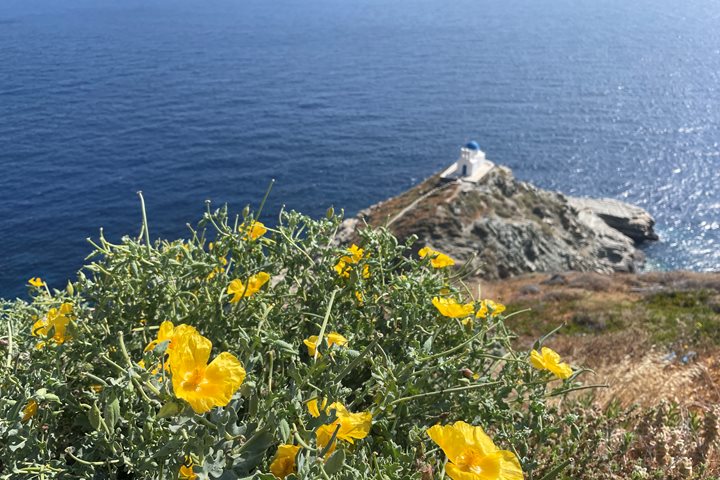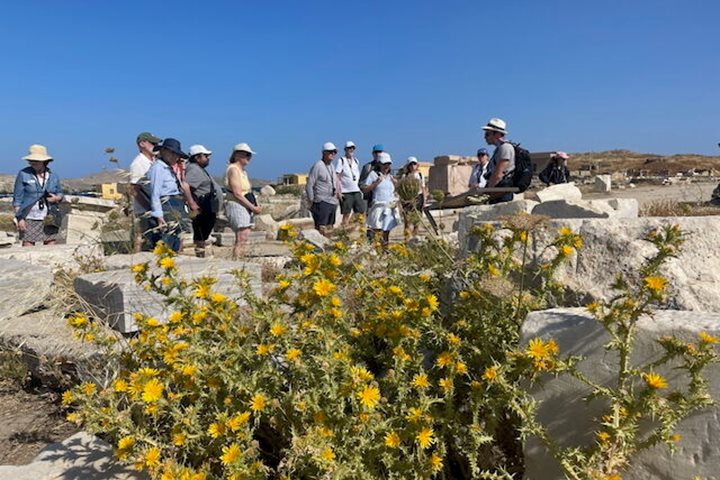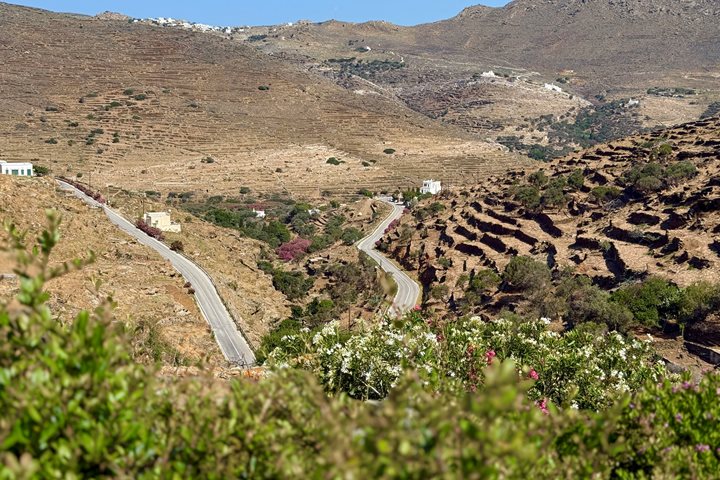At Sea / Didyma Turkey
Early this morning the Sea Cloud continued making her way off the coast of Turkey near the Greek island of Samos. The expedition leader and captain were on the bridge discussing wind conditions for the morning sailing of our square rigger and when to position the ship to begin sending the crew to sail stations. At 0800 the call was made and sailors began bracing the yards, then going aloft to loose the gaskets on the sails, afterwards returning to the decks to trim the sails. The preparation to sail takes the officers and crew approximately one hour and involves more than 18 sailors on deck, giving and taking orders, while remaining in constant contact with the bridge. Watching the crew climb the rope ladders on the windward side of the ship was exhilarating, to say the least! Encouragement, shouts, orders and a keenly watchful set of officers and sailors made the Sea Cloud ready to cut her engines and enjoy the power of nature...soon all that could be heard was the wind in the sails as our speed dropped and this magnificent ship, sails filled with wind, moved across the Aegean Sea as sailing vessels have done for thousands of years...albeit in many different classes both larger and smaller than the Sea Cloud. It was an awe-inspiring experience to watch and be a part of! Many of us took the time to explore the Sea Cloud, walking from the Blue Lagoon deck in the very aft of the vessel to the Monkey deck located over the bridge...each area giving a new vantage point to watch, photograph and enjoy a large very sea-worthy vessel riding beautifully in a light breeze.
The remainder of our morning was spent with a mandatory drill and in the late morning, a presentation given by our marine archaeologist Robyn Woodward about the underwater archaeology in Turkey, in preparation for our visit to the Archaeology Museum in Bodrum on Thursday.
After lunch the Sea Cloud positioned off the port town of Didyma, a well-known ruin site. Located on the west coast of Turkey, this was an important sacred site in the ancient Greek world. Its famous oracle and Temple of Apollo attracted crowds of pilgrims and was second only to Delphi. It was also the fourth-largest sanctuary in the Greek world and the design of this temple to Apollo was influenced by the Temple to Artemis at Ephesus and the Temple of Hera at Samos, as it was designed by renowned architects who worked on all three temples, Paionius of Ephesus and Daphnis of Miletus. Originally, 122 enormous ionic columns surrounded the temple; today only three remain intact, dating from the second century BC. The columns are sixty feet tall and have a diameter of six feet at the base. The temple as a whole was ninety feet high and approached by fourteen steps. The cella (roofed chamber) has two ionic columns supporting the roof and opens on the north and south sides to small chambers containing staircases, which may have led to a terrace on the cella roof.
In the variety and complexity of its interior spaces, Didyma is unique. It is quite different for another reason: in 1979 barely visible thin lines were discovered incised on the interior of the wall of the inside large open sanctuary. After much examination it was decided that these lines (seen in exactly the right light) were a blueprint of the temple, a rendering in full-scale scratched into the surface of the marble to serve as a guide for the many lifetimes it would take to complete this temple. Didyma was never completed and the walls of the cella never received their final polishing...so this blueprint remains as a record of the past, and a reminder to many future generations of the continuum of culture.
We spent some time exploring this well preserved ruin site. There were sculptures of Medusas, griffons, and acanthus leaves, all reminding us of the past interwoven into the present decorated with spring flowers and vines, all part of spring in Turkey along the Aegean Sea.






